Cover
Principles of Terrestrial Ecosystem Ecology, 2nd Edition
ISBN 9781441995032
Preface
Contents
Part I: Context
1: The Ecosystem Concept
Introduction
A Focal Issue
Overview of Ecosystem Ecology
History of Ecosystem Ecology
Ecosystem Structure and Functioning
Ecosystem Processes
Ecosystem Structure and Constraints
Controls Over Ecosystem Processes
Human-Induced Ecosystem Change
Human Impacts on Ecosystems
Resilience and Threshold Changes
Degradation in Ecosystem Services
Summary
Review Questions
Additional Reading
2: Earth’s Climate System
Introduction
A Focal Issue
Earth’s Energy Budget
The Atmospheric System
Atmospheric Composition and Chemistry
Atmospheric Structure
Atmospheric Circulation
The Ocean
Ocean Structure
Ocean Circulation
Landform Effects on Climate
Vegetation Influences on Climate
Temporal Variability in Climate
Long-Term Changes
Anthropogenic Climate Change
Interannual Climate Variability
Seasonal and Daily Variation
Storms and Weather
Relationship of Climate to Ecosystem Distribution and Structure
Summary
Review Questions
Additional Reading
3: Geology, Soils, and Sediments
Introduction
A Focal Issue
Controls Over Soil Formation
Parent Material
Climate
Topography
Time
Potential Biota
Human Activities
Controls Over Soil Loss
Development of Soil Profiles
Additions to Soils
Soil Transformations
Soil Transfers
Losses from Soils
Soil Horizons and Soil Classification
Soil Properties and Ecosystem Functioning
Soil Physical Properties
Soil Chemical Properties
Summary
Review Questions
Additional Reading
Part II: Mechanisms
4: Water and Energy Balance
Introduction
A Focal Issue
Surface Energy Balance
Radiation Budget
Partitioning of Absorbed Radiation
Box 4.1 The Energetics of Water Movement
Overview of Ecosystem Water Budgets
Water Inputs to Ecosystems
Water Movements Within Ecosystems
Water Movement from the Canopy to the Soil
Water Storage and Movement in the Soil
Water Movement from Soil to Roots
Water Movement Through Plants
Roots
Box 4.2 Tracing Water Flow Through Ecosystems
Stems
Leaves
Water Losses from Ecosystems
Evaporation from Wet Canopies
Evapotranspiration from Dry Canopies
Changes in Storage
Runoff
Summary
Review Questions
Additional Reading
5: Carbon Inputs to Ecosystems
Introduction
A Focal Issue
Overview of Carbon Inputs to Ecosystems
Biochemistry of Photosynthesis
Pelagic Photosynthesis
Light Limitation
CO 2 Supply
Nutrient Limitation
Pelagic GPP
Living on the Edge: Streams and Shorelines
Terrestrial Photosynthesis
Photosynthetic Structure of Terrestrial Ecosystems
C 4 Photosynthesis
Box 5.1 Carbon Isotopes
Crassulacean Acid Metabolism
CO 2 Limitation
Light Limitation
Nitrogen Limitation and Photosynthetic Capacity
Water Limitation
Temperature Effects
Pollutants
Terrestrial GPP
Canopy Processes
Leaf Area
Length of the Photosynthetic Season
Satellite-Based Estimates of GPP
Summary
Review Questions
Additional Reading
6: Plant Carbon Budgets
Introduction
A Focal Issue
Plant Respiration
What Is NPP?
Marine NPP
Lake NPP
Stream and River NPP
Terrestrial NPP
Physiological Controls Over NPP
Environmental and Species Controls Over NPP
Allocation
Allocation of NPP
Allocation Response to Multiple Resources
Diurnal and Seasonal Cycles of Allocation
Tissue Turnover
Global Distribution of Biomass and NPP
Biome Differences in Biomass
Biome Differences in NPP
Summary
Review Questions
Additional Reading
7: Decomposition and Ecosystem Carbon Budgets
Introduction
A Focal Issue
Overview of Decomposition and Ecosystem Carbon Balance
Leaching of Litter
Litter Fragmentation
Chemical Alteration
Fungi
Bacteria and Archaea
Soil Animals
Temporal and Spatial Heterogeneity of Decomposition
Temporal Pattern
Vertical Distribution
Box 7.1 Isotopes and Soil Carbon Turnover
Factors Controlling Decomposition
Litter Quality
Rhizosphere Stimulation of Decomposition
Microbial Community Composition and Enzymatic Capacity
The Environment
Moisture
Temperature
Soil Organic Matter
Soil Properties
Soil Disturbance
Humus Formation
Peat Accumulation and Trace Gas Emissions
Heterotrophic Respiration
Net Ecosystem Production (NEP)
Box 7.2 Measuring Carbon Fluxes of Ecosystems and Regions
Net Ecosystem Carbon Balance
Gaseous Carbon Fluxes
Particulate Carbon Fluxes
Dissolved Carbon Fluxes
Stream Carbon Fluxes
Stream Decomposition
Stream Carbon Budgets
Lake Carbon Fluxes
Ocean Carbon Fluxes
Carbon Exchange at the Global Scale
Summary
Review Questions
Additional Reading
8: Plant Nutrient Use
Introduction
A Focal Issue
Overview
Ocean Ecosystems
Lake Ecosystems
Rivers and Streams
Terrestrial Ecosystems
Nutrient Movement to the Root
Diffusion
Mass Flow
Root Interception
Nutrient Absorption
Nutrient Supply
Development of Root Length
Mycorrhizae
Nitrogen Fixation
Root Absorption Properties
Nutrient Use
Nutrient Loss from Plants
Senescence
Leaching Loss from Plants
Herbivory
Other Avenues of Nutrient Loss from Plants
Summary
Review Questions
Additional Reading
9: Nutrient Cycling
Introduction
A Focal Point
Overview of Nutrient Cycling
Marine Nutrient Cycling
Large-Scale Nutrient Cycles
Estuaries
Coastal Currents
Lake Nutrient Cycling
Stream Nutrient Cycling
Nitrogen Inputs to Terrestrial Ecosystems
Biological Nitrogen Fixation
Groups of Nitrogen Fixers
Causes of Variation in Nitrogen Fixation
Nitrogen Deposition
Internal Cycling of Nitrogen
Overview of Mineralization
Production and Fate of Dissolved Organic Nitrogen
Production and Fate of Ammonium
Production and Fate of Nitrate
Temporal and Spatial Variability
Pathways of Nitrogen Loss
Gaseous Losses of Nitrogen
Ecological Controls
Atmospheric Roles of Nitrogen Gases
Solution Losses
Erosional Losses
Other Element Cycles
Phosphorus
Sulfur
Essential Cations
Micronutrients and Nonessential Elements
Nitrogen and Phosphorus Cycling in Agricultural Systems
Summary
Review Questions
Additional Reading
10: Trophic Dynamics
Introduction
A Focal Issue
Overview of Trophic Dynamics
Controls Over Energy Flow through Ecosystems
Bottom-Up Controls
Top-Down Controls
Trophic Effects on Nutrient Cycling
Ecological Efficiencies
Trophic Efficiency and Energy Flow
Consumption Efficiency
Assimilation Efficiency
Production Efficiency
Food Chain Length
Seasonal and Interannual Patterns
Nutrient Transfers
Detritus-Based Trophic Systems
Integrated Food Webs
Summary
Review Questions
Additional Reading
11: Species Effects on Ecosystem Processes
Introduction
A Focal Issue
Overview of Species Effects on Ecosystem Processes
Effect Functional Types
Species Effects on Biogeochemistry
Nutrient Supply
Nutrient Turnover
Species Effects on Biophysical Processes
Species Effects on Trophic Interactions
Species Effects on Disturbance Regime
Response Functional Types
Integrating the Effects of Traits on Ecosystems
Functional Matrix of Multiple Traits
Linkages Between Response and Effect Traits
Diversity as Insurance
Species Interactions and Ecosystem Processes
Summary
Review Questions
Additional Reading
Part III: Patterns
12: Temporal Dynamics
Introduction
A Focal Issue
Ecosystem Resilience and Change
Alternative Stable States
Resilience and Thresholds
Sources of Resilience
Limits to Resilience
Thresholds and Regime Shifts
Box 12.1 Resilience and Regime Shifts
Disturbance
Conceptual Framework
Impact of a Disturbance Event
Recovery and Renewal after Disturbance
Disturbance Regime
Succession
Ecosystem Structure and Composition
Primary Succession
Secondary Succession
Water and Energy Exchange
Carbon Balance
Primary Succession
Secondary Succession
Nutrient Cycling
Primary Succession
Secondary Succession
Trophic Dynamics
Temporal Scaling of Ecological Processes
Summary
Review Questions
Additional Reading
13: Landscape Heterogeneity and Ecosystem Dynamics
Introduction
A Focal Issue
Concepts of Landscape Heterogeneity
Causes of Spatial Heterogeneity
Detection and Analysis of Spatial Heterogeneity
State Factors and Interactive Controls
Community Processes and Legacies
Disturbance
Interactions Among Sources of Heterogeneity
Patch Interactions on the Landscape
Topographic and Land–Water Interactions
Atmospheric Transfers
Movement of Plants and Animals on the Landscape
Disturbance Spread
Human Land-Use Change and Landscape Heterogeneity
Extensification
Intensification
Extrapolation to Larger Scales
Box 13.1 Spatial Scaling Through Ecological Modeling
Summary
Review Questions
Additional Reading
Part IV: Integration
14: Changes in the Earth System
Introduction
A Focal Issue
Human Drivers of Change
The Global Water Cycle
Water Pools and Fluxes
Anthropogenic Changes in the Water Cycle
Consequences of Changes in the Water Cycle
The Global Carbon Cycle
Carbon Pools and Fluxes
Changes in Atmospheric CO 2
Marine Sinks for CO 2
Box 14.1 Partitioning of Carbon Uptake Between the Land and Ocean
Terrestrial Sinks for CO 2
CO 2 Effects on Climate
The Global Methane Budget
The Global Nitrogen Cycle
Nitrogen Pools and Fluxes
Anthropogenic Changes in the Nitrogen Cycle
The Global Phosphorus Cycle
Phosphorus Pools and Fluxes
Anthropogenic Changes in the Phosphorus Cycle
The Global Sulfur Cycle
Summary
Review Questions
Additional Reading
15: Managing and Sustaining Ecosystems
Introduction
A Focal Issue
Sustaining Social–Ecological Systems
Box 15.1 Social-Ecological Interactions and the Flooding of New Orleans
Sustainability
Ecological Dimensions of Sustainability
Box 15.2 Assessing Tradeoffs Among Ecosystem Services: Hydropower Versus Conservation in New Zealand
Box 15.3 Water Purification for New York City
Conceptual Framework for Ecosystem Management
Sustaining Soil Resources
Sustaining Biodiversity
Sustaining Variability and Resilience
Applying Ecosystem Principles to Management
Forest Management
Fisheries Management
Ecosystem Renewal
Box 15.4 Everglades Restoration Study
Management for Endangered Species
Socioeconomic Contexts of Ecosystem Management
Meeting Human Needs and Wants
Managing Flows of Ecosystem Services
Addressing Political Realities
Innovation and Adaptive Management
Sustainable Development: Social–Ecological Transformation
Summary
Review Questions
Additional Reading
Abbreviations
Glossary
References
Index

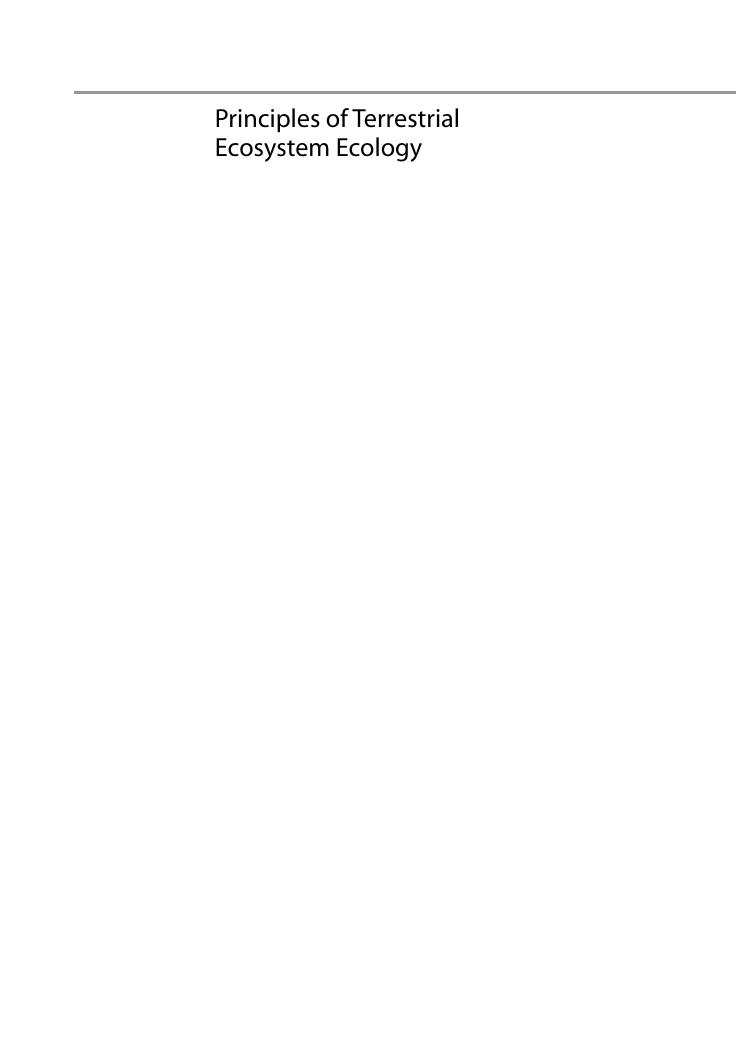

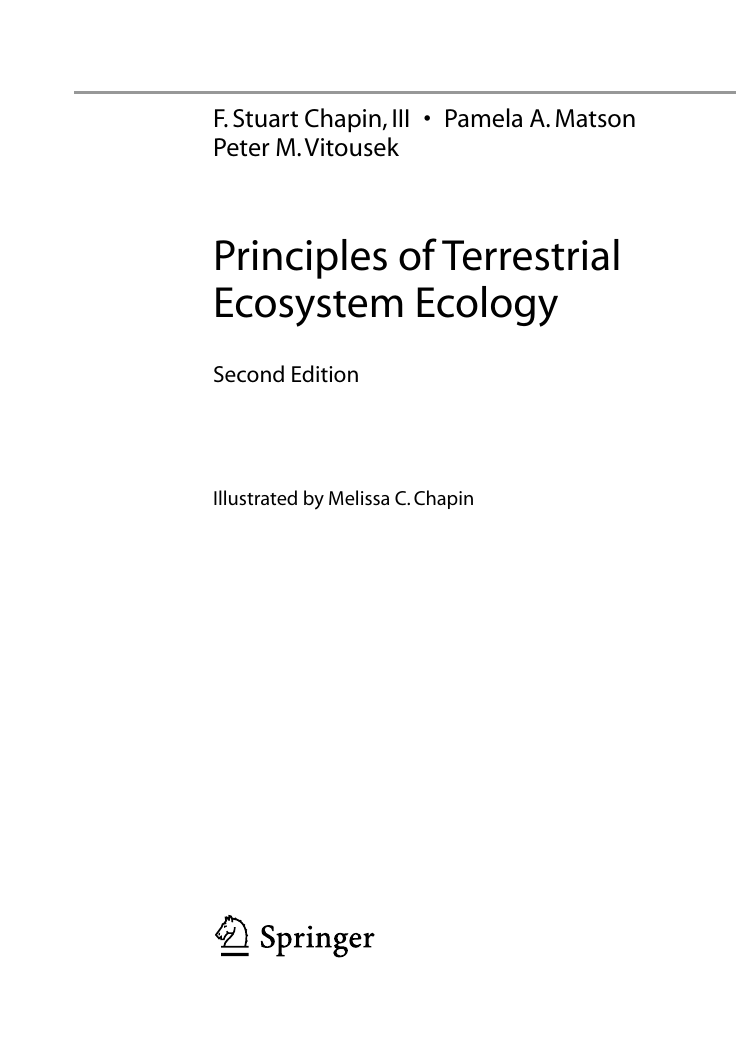
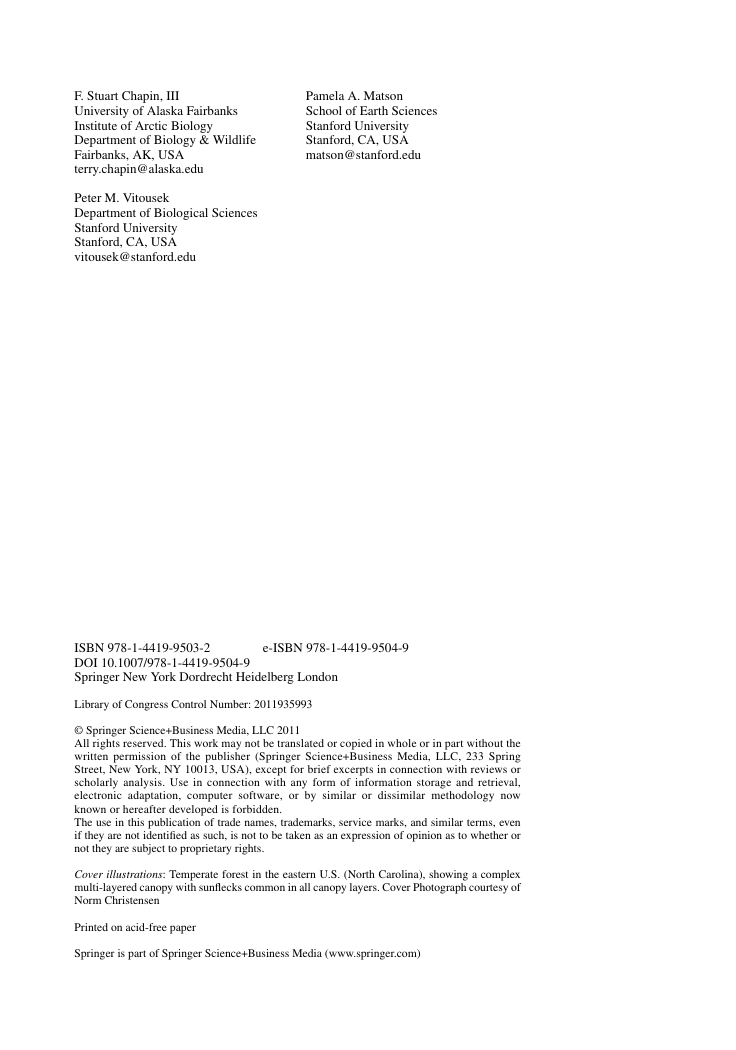
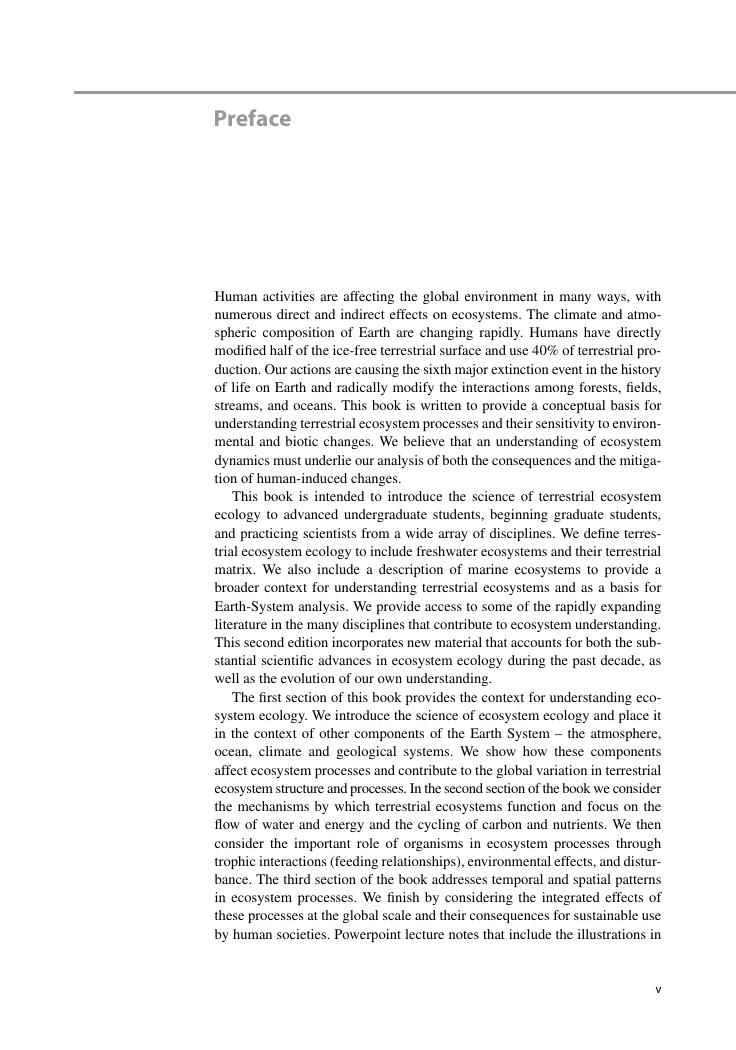
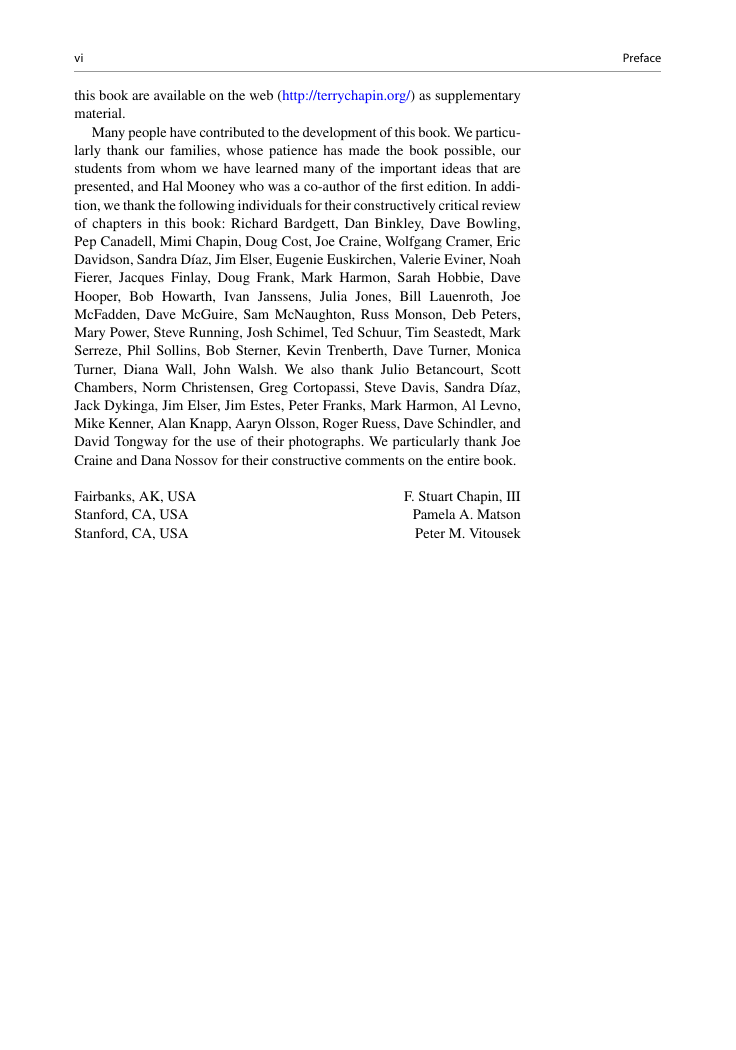









 2023年江西萍乡中考道德与法治真题及答案.doc
2023年江西萍乡中考道德与法治真题及答案.doc 2012年重庆南川中考生物真题及答案.doc
2012年重庆南川中考生物真题及答案.doc 2013年江西师范大学地理学综合及文艺理论基础考研真题.doc
2013年江西师范大学地理学综合及文艺理论基础考研真题.doc 2020年四川甘孜小升初语文真题及答案I卷.doc
2020年四川甘孜小升初语文真题及答案I卷.doc 2020年注册岩土工程师专业基础考试真题及答案.doc
2020年注册岩土工程师专业基础考试真题及答案.doc 2023-2024学年福建省厦门市九年级上学期数学月考试题及答案.doc
2023-2024学年福建省厦门市九年级上学期数学月考试题及答案.doc 2021-2022学年辽宁省沈阳市大东区九年级上学期语文期末试题及答案.doc
2021-2022学年辽宁省沈阳市大东区九年级上学期语文期末试题及答案.doc 2022-2023学年北京东城区初三第一学期物理期末试卷及答案.doc
2022-2023学年北京东城区初三第一学期物理期末试卷及答案.doc 2018上半年江西教师资格初中地理学科知识与教学能力真题及答案.doc
2018上半年江西教师资格初中地理学科知识与教学能力真题及答案.doc 2012年河北国家公务员申论考试真题及答案-省级.doc
2012年河北国家公务员申论考试真题及答案-省级.doc 2020-2021学年江苏省扬州市江都区邵樊片九年级上学期数学第一次质量检测试题及答案.doc
2020-2021学年江苏省扬州市江都区邵樊片九年级上学期数学第一次质量检测试题及答案.doc 2022下半年黑龙江教师资格证中学综合素质真题及答案.doc
2022下半年黑龙江教师资格证中学综合素质真题及答案.doc